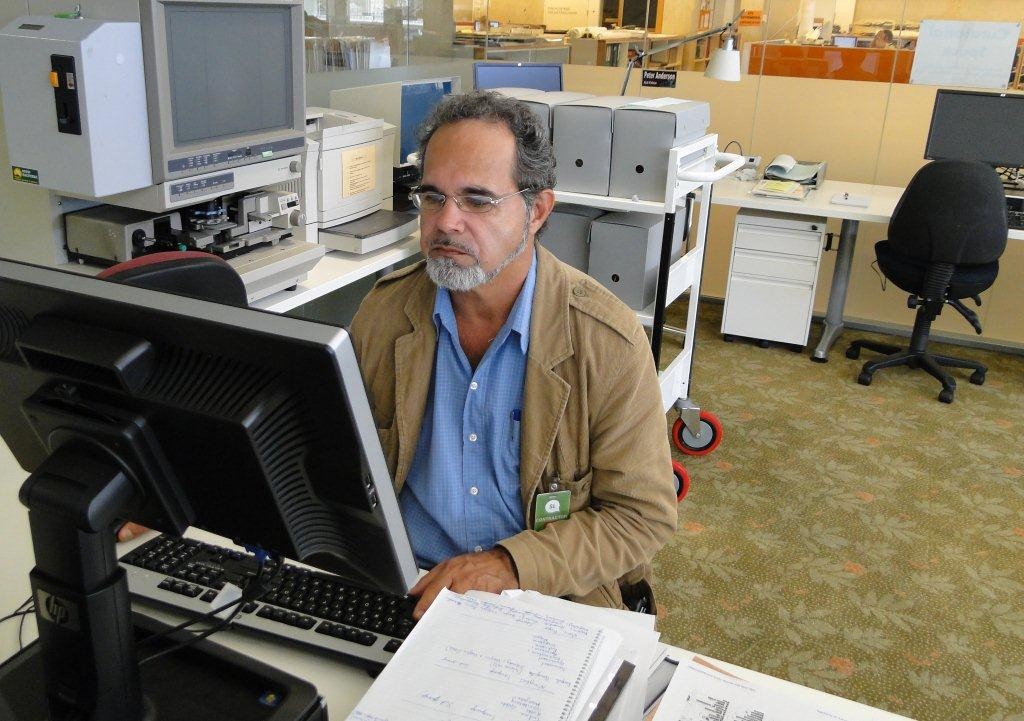Identifying main words of Bundaberg tribe Taribelang (Kalkie language) within the Great Sandy Strait language group
By JOL Admin | 16 July 2013

Guest blogger: Phil Brown, Central Queensland Language Centre
My two week residency at the State Library of Queensland began by locating archival materials which are significant to Australian languages within the Bundaberg and Great Sandy Strait region.
The main focus of my research was concerned the meaning of four separate items:
Dari’belang - Dari meaning north
Bulang- strong {Yugumbir} (Watson 1944: 55)
Dibbil- a species of eagle (Watson, 1944: 72)
Bunda- title of a marital class; a man of that class {Kabi} (Watson 1944: 26)
Bundaberg - The city name is thought to be an artificial combination of bunda, the Kabi Aboriginal word denoting important man and the German suffix berg indicating mountain. Bunda is one of the moieties attributed to the Kabi Language Group. (Edward Curr 1886-7).
All the historical and anthropological sources (Palmer 1884; Ridley 1855; Illidge 1887; Curr 1886-7; Roth 1897; Mathew 1910; Watson 1944; Tindale 1974) agree in locating groups of Aboriginal people speaking their own languages. The strongest link to the Taribelang was the Batjala and Kabi-Kabi who are recorded as the southern neighbours. Links to the western boundary of the Taribelang is the Waka-Waka, due to the Burnett River corridor, and the northern neighbours were the Gureng.
I found other sources which also confirmed the Taribelang as being affiliated with the Kabi Kabi and the earliest mentions of local Aboriginal groups are the Wahr people who were the inhabitants of the Hervey Bay (Dundurra Bay) region which stretched from the Mary River to the Burnett River who spoke a dialect of the Kabi language (Edward Curr 1886-7).
“The Wide Bay and Mary River blacks speak Cabbee a dialect now spoken by the blacks on the Brisbane River. It is understood from Brisbane north to the Kalkie speaking blacks of Bundaberg" (Brisbane Courier 23/03/1891, p.7)
I believe the most important implication for professionals studying Australian languages is the understanding of Indigenous education is on an individual level with the indigenous community, and the need in forming an identity through building self-esteem. Whilst this varies based on the individual, teachers need to take into consideration the local knowledge, stories, skills, and community influences that are important to Indigenous Australians.
All of the Indigenous employees I spoke with at the State Library of Queensland, acknowledged the significance of building an identity for Indigenous students through local and community links. The State Library of Queensland’ allows Aboriginal people to research specific languages and confirms this facet of Indigenous learning in its two (2) week residential.
Each local Aboriginal community is rich in resources, history and knowledge, and teachers are well advised to use the resources available at the State Library of Queensland to best meet the needs of students. The valuing of such material, along with a respect for and an understanding of Aboriginality, history and language will result in a better education for Aboriginal people.
Finally this residential has raised a question of diplomacy between the State Library of Queensland and the Queensland’s Indigenous people, and as for myself I would like to formally maintain and continue to contribute research to any community through further research.
Comments
Your email address will not be published.
We welcome relevant, respectful comments.